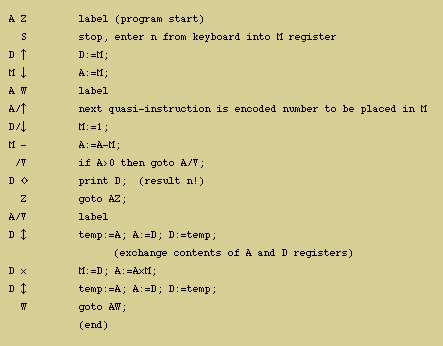Olivetti Programma 101
UvA Computer Museum catalogue nr 93.20

The Programma 101 uses an arithmetic-logic unit built from separate transistors, and a delay line memory module. There are 10 registers each holding a 22- digit decimal number (in binary-coded-decimal representation!) or a string of 24 instructions. Besides electronics, the P101 has an appreciable amount of sturdy mechanics for its keyboard, built-in printer and magnetic-card reader/recorder. The output was printed on a fast, 30 column drum printer.
The machine's arithmetic operations are -, +, *, /, sqrt, abs. Other operators include data transfer between registers, conditional and unconditional jump. Programs containing up to 120 instructions can be recorded on a magnetic program card. There are extensive program collections for general mathematics, electrical and civil engineering, finance, and other disciplines. The size of the machine is 19*48*61 cm, its weight is 35.5 kg. 40,000 were constructed and they were sold for US$ 3200. See the advertisement from Scientific American (1970).
Below a program (adapted from [2]) for calculating and printing n! is shown. In the left hand column the commands are shown as they are entered from the keyboard. The commands are explained by the pseudo-code at the right. Three registers are used: A, M and D.

References:
[1a] Handleiding Programma 101 Tafelcomputer, Olivetti 19?? (Dutch version, in our library).[1b] Programma 101 General Reference Manual, Olivetti 1965.
[2] The Olivetti Programma 101 desk calculator. In: C. Gordon Bell (ed): Computer Structures: Readings and Examples. McGrawHill 1971.
[3] Wikipedia: Programma 101.
rev February 27, 2017

